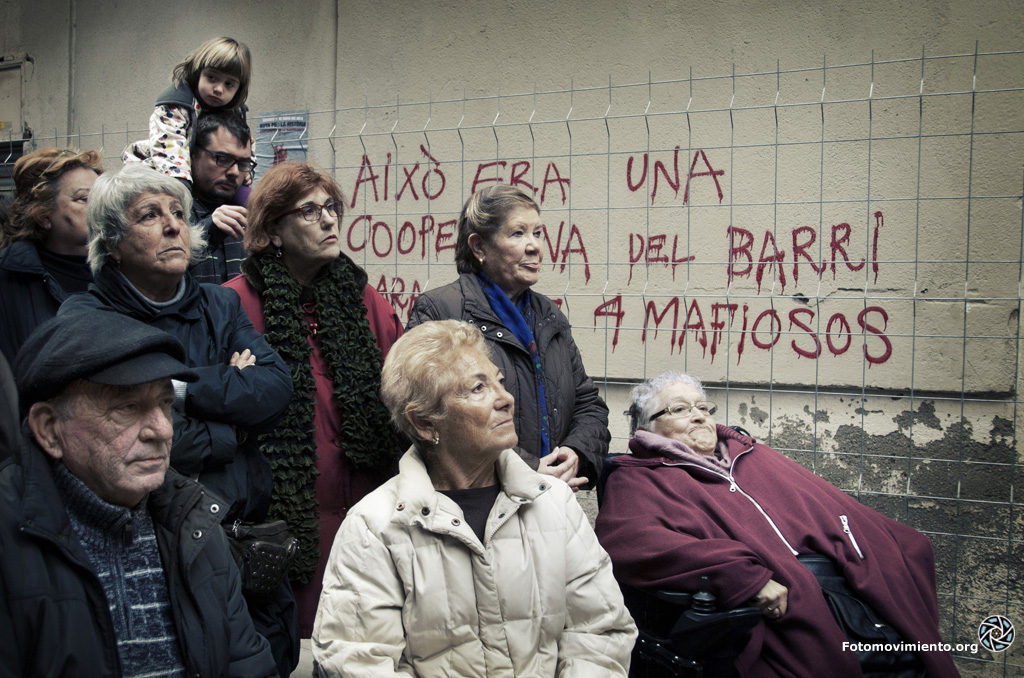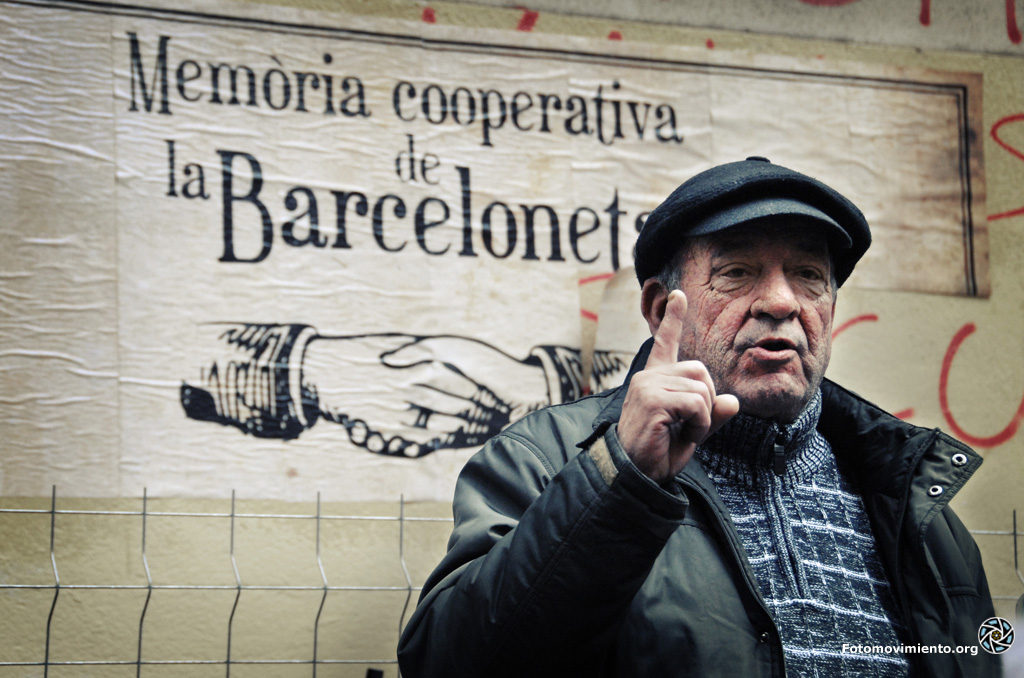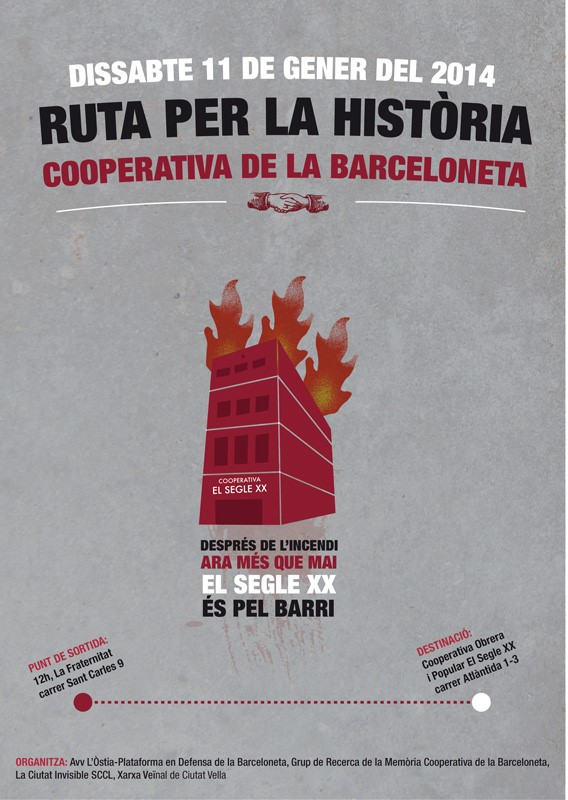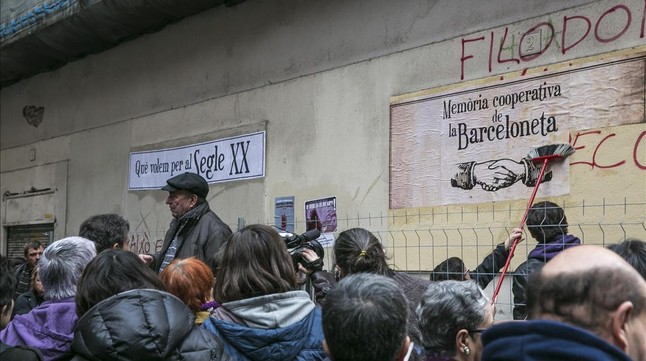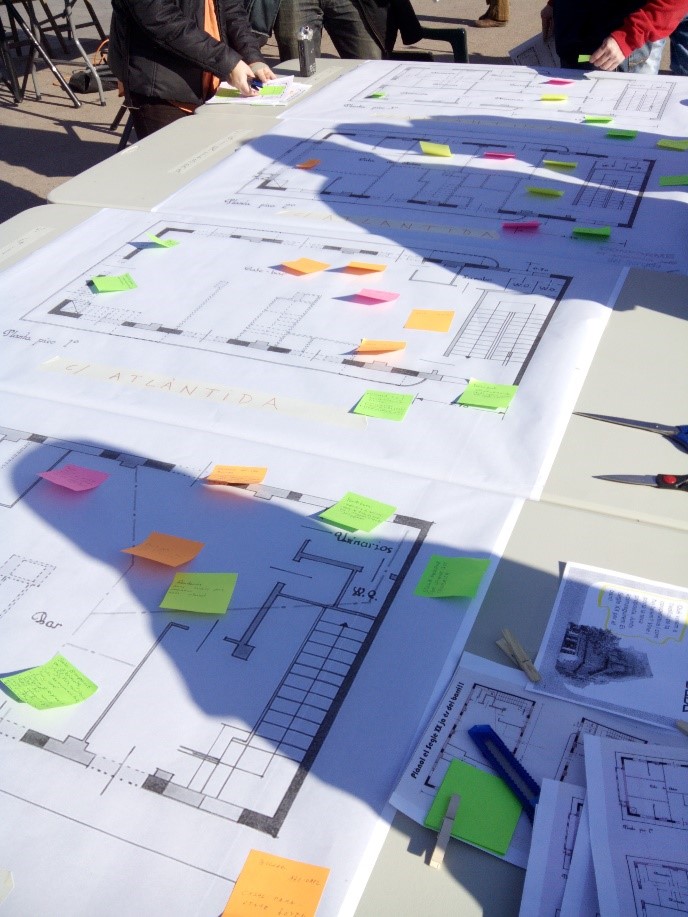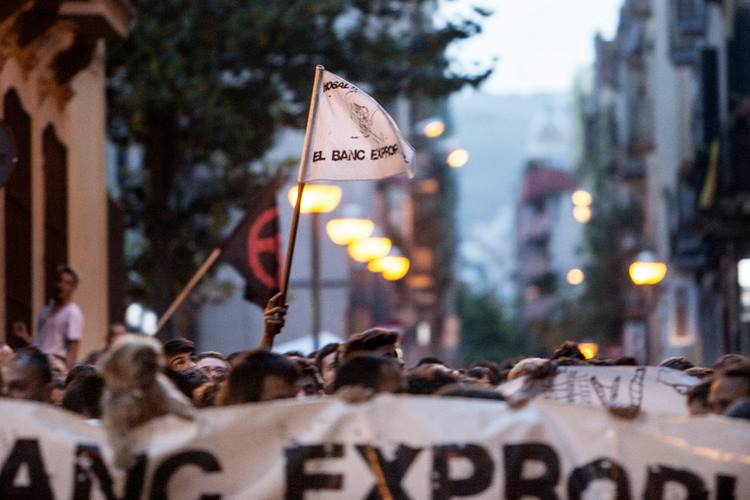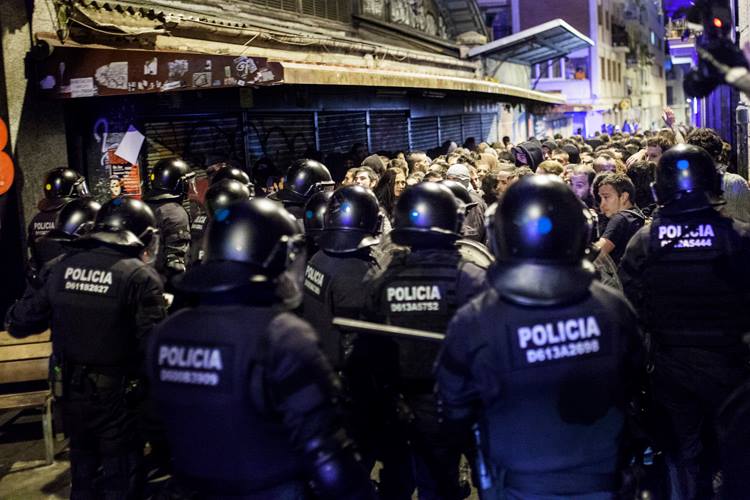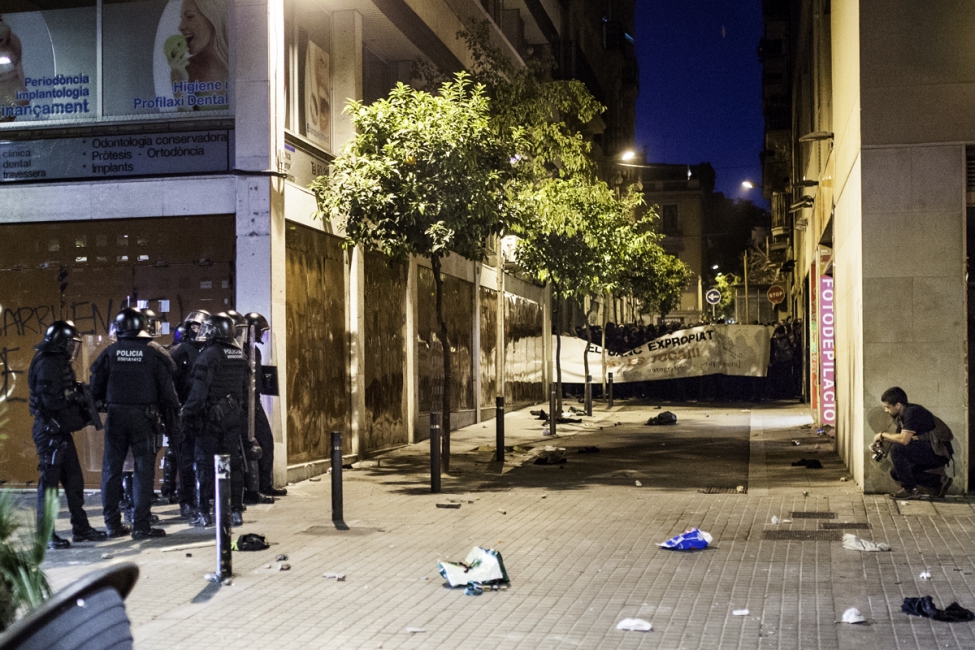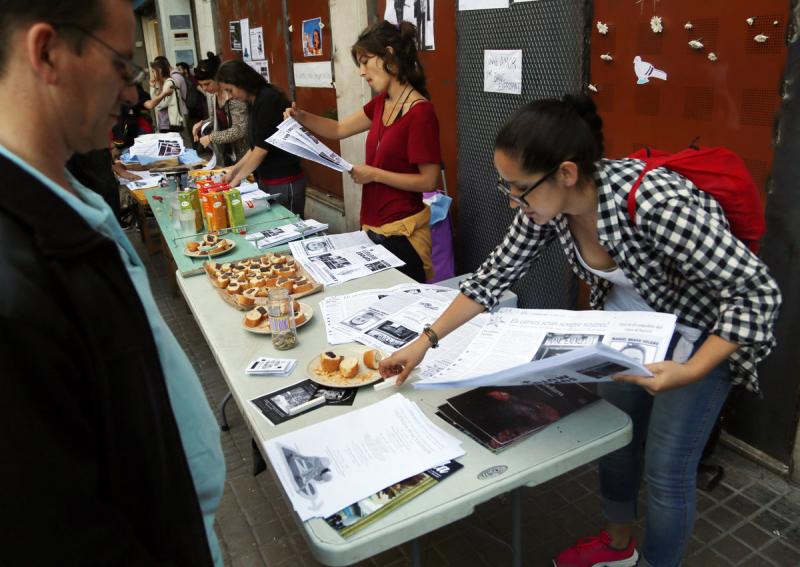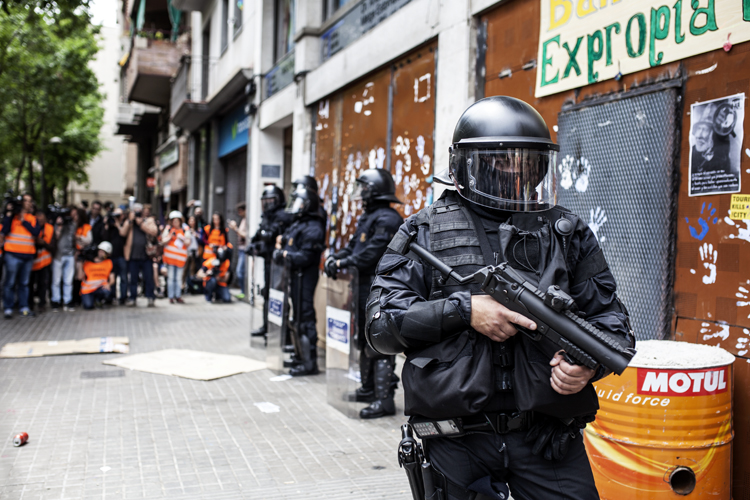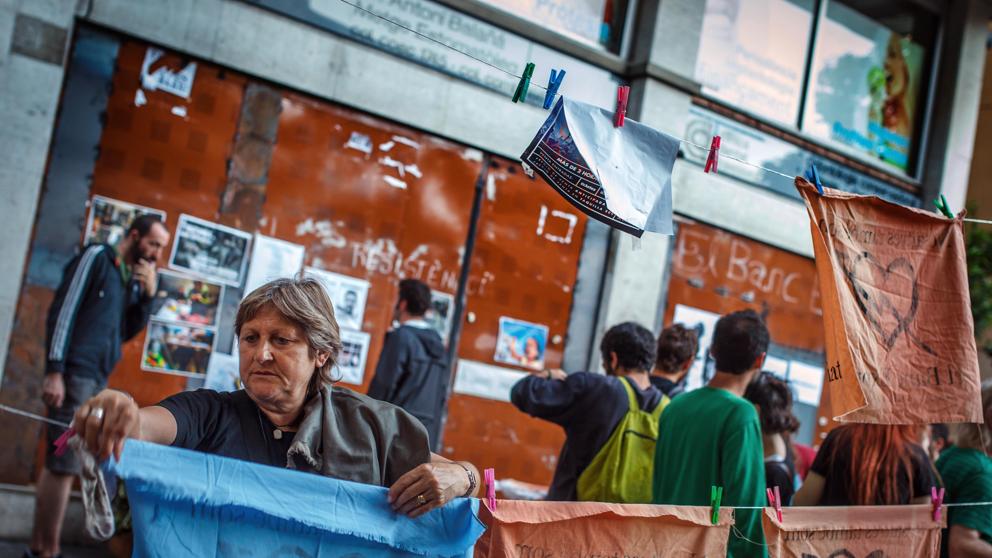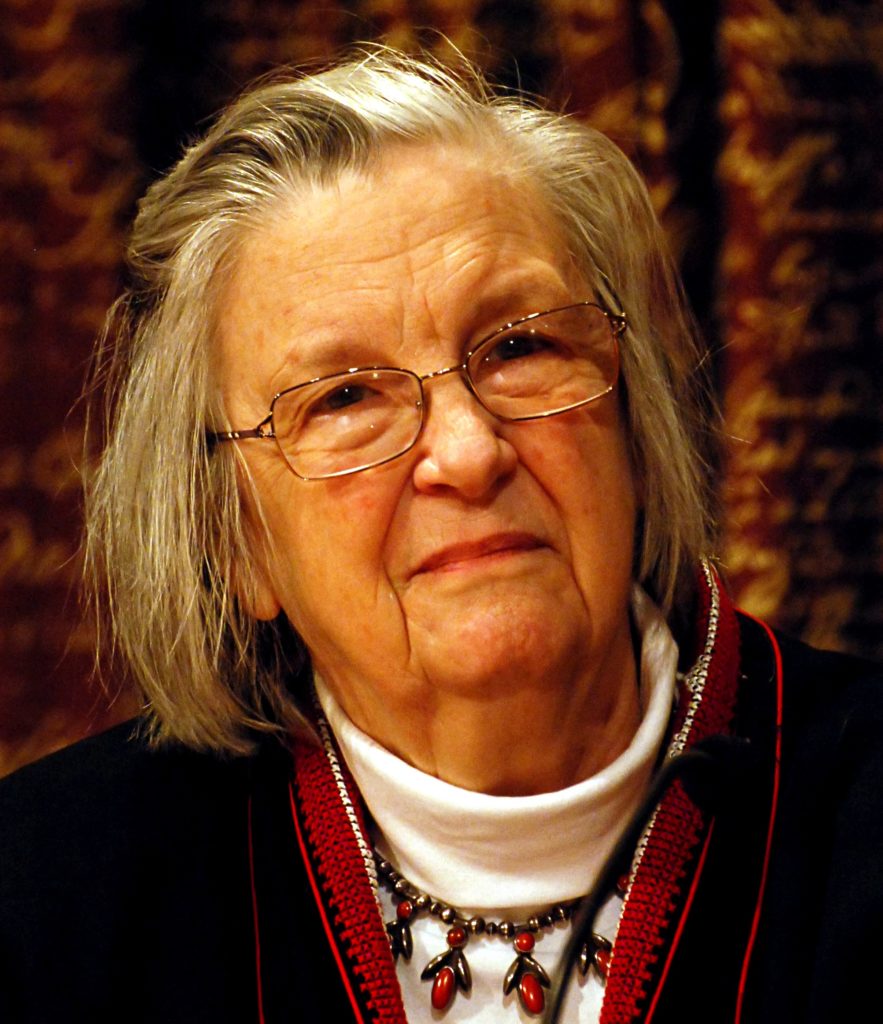
By Aaron Vansintjan
At some point during the Quebec student strike of 2012, I found myself in an enormous protest in downtown Montreal. We took up the street as far as the eye could see. All of a sudden, a mass of people dressed in black stormed down the other half of the road. The anarchist contingent, going the wrong way.
The effect was incredible: here we were, in the thousands, all walking together in one direction to demand tuition subsidized by the state, and simultaneously, thousands of others were calling for an end to the state, walking the other way. I climbed onto the concrete divider in the center of the street separating the two lanes, unsure of which side I should join.
One protest, two directions: a neat metaphor for the tension in the Left today. We are trying to choose between supporting welfare programs and rejecting the top-down nature of the state itself. Just as education, health insurance, and welfare need to be protected, the state plays a key role in environmental destruction, securitization and policing, and international wars. How can we resolve this tension?
If you try to figure out what role the state should have, you’ll inevitably be led to a list of great thinkers: Adam Smith, Karl Marx, John Maynard Keynes, Friedrich Hayek, and, for a more contemporary twist, Thomas Piketty or Amartya Sen.
Her work sought to think political economy beyond both the state and the market.
Rarely does Elinor Ostrom appear on that list—but she certainly deserves to be included. Ostrom spent much of her life trying to figure out how people solve problems of distribution amongst themselves, and why some communities are able to share resources while others are not. Her work sought to think political economy beyond both the state and the market—something that many of those giants of political theory had not, thus far, been able to do very well. In other words, she could think in two directions, at the same time.
I’ve always thought that, for people interested in social progress, engaging with Ostrom’s work is crucial. Unfortunately, she’s not very well known. It’s not that Elinor Ostrom’s work is hard to get hold of; her relative obscurity is probably more related to the fact that it’s not that easy to figure out the wider implications of her research. Her work can help us think about austerity, state welfare, the market, local democracy, and environmental issues. But how it would do so is rarely made explicit.
Luckily, this gap has now been rectified in the new book, Elinor Ostrom’s rules for radicals: Cooperative alternatives beyond markets and states, by Derek Wall and published by Pluto Press. Wall is a politician (as a Green Party candidate he stood against Theresa May in the 2017 General Elections) and activist who spends much of his time writing about radical politics, social movements, political theory, and left strategy.
As its title suggests, the book is directed at people on the left (‘radicals’). Wall describes this book as a bite-size take on his more serious and dry PhD-thesis-length tome, The Sustainable economics of Elinor Ostrom: Commons, contestation, and craft. There is little dryness here, though, as Wall peppers the book with little detours and passionate reflections on subjects as diverse as Occupy Wall Street, Rojava, and the TV show The Wire.
Throughout the book the main sense I got was a wholehearted excitement about and admiration for Elinor Ostrom’s work. Apart from its very necessary contribution to leftist strategy and thought, it is this enthusiasm that propels the book forward, making it an enjoyable and light read.
With a nod to Saul Alinsky, Wall starts the book with 13 very short ‘rules for radicals’, which include ‘be specific’, ‘collective ownership can work’, ‘map power’, and ‘no panaceas’. These may not make much sense at first, but as you read the book, they form the basic threads of his argument and help to create a coherent picture of Ostrom’s work and how it can inform the left.
I was able to attend the book launch in London this past November, and we had agreed that I could ask some questions after. During the talk, Wall—wearing a Kurdish scarf and expressing solidarity with his friend Mehmet Aksoy who has recently passed away—talked more about the stories he knew about Ostrom than the contents of his book itself. He referred to her as ‘Elinor’, as if talking about a dear friend, and the audience laughed along as he told us about her meeting with the political economist Garrett Hardin, and Wall’s own encounter with her shortly before she passed away.
Later, over drinks at the pub across the street, we huddled together to talk about Rojava, Marxism, ecosocialism, and today’s new social movements—not at all in the right state for a serious interview. So we decided to leave it to an email later. The following is the result of our email exchange, edited lightly for brevity and flow.
Say I’m a socialist unfamiliar with Ostrom’s work. What’s your 1-minute pitch? Why should I care?
Socialism, someone said, is about sharing. Marxists argue that means of production need to be owned by the whole community. Elinor gives us the tools to do the job, a hard-nosed, flexible approach to communal ownership based on science, research, and pragmatism. Her insight that collective ownership is possible makes the apparently radical reasonable.
What kind of person was Elinor Ostrom? How do you think that shows in her work?
She was a fun open human being, she would talk to anybody, and was known to take care to answer questions that came in emails from across the planet. She was interested in practical problem solving and opposed any kind of dogma. She was not that kind of elitist ivory tower academic but respected others and sought to learn from the grassroots.
In the beginning of the book you have a list of 13 rules for radicals. One of them is ‘pose social change as problem solving’? What do you mean by this?
In politics we tend to think in terms of conspiracies and slogans. Politics is too often seen as replacing an elite with an alternative set of leaders. This is at best insufficient. I am not fundamentally against electoral politics in a liberal context but they are limited. The Ostrom approach is about participation, creating a deeply democratic society instead of replacing ‘bad people’ with ‘good people’ at the top of a structure.
Politics is too often seen as replacing an elite with an alternative set of leaders. This is at best insufficient.
In turn, we too often have a kind of magical and ideological thinking where we are for ‘good things’ and against ‘bad things’, promoting broad slogans or writing manifestos with sets of demands. Instead we need to view the good things we would like to achieve such as ecology, equality, and freedom as challenges to meet. The history of the left shows that whether we are talking about reform or revolution, practical problems and entrenched power structures can transform good intentions into restoration of oppression.
Specifically, Elinor Ostrom looked at ‘commons’ as a matter of problem solving. She didn’t believe that commons were either doomed to failure (the so-called tragedy of the commons) or a universal solution. Instead she noted that some things were inevitably held in common—for example, its difficult for an individual to own a river or the seas—and then looked at how to solve the problem of overuse. I think this is a good approach!
What do you think explains the paucity of awareness about Elinor Ostrom’s work?
Ostrom’s approach is difficult to place, she was often inspired by thinkers on the free market right like James Buchanan and Hayek but in doing so challenged market based notions of purely private property and the market. Her uncanny ability to upset those who seek to summarise her ideas as simple slogans means her ideas can be challenging. However interest in the left is growing, for example, the Indigenous leader and revolutionary Hugo Blanco cites her and her approach seems to describe much of what the Kurds and their allies are trying to achieve in Rojava.
How do you think Ostrom’s work relates to Marxism?
For a start, Marxism has stressed class struggle and macro change. Marxists have argued that revolution will transform society and provide a break from old oppressive structures with the introduction of communism. Ostrom’s micro analysis about how you build practical institutional structures to promote more ecological, equal and diverse societies, can be rejected as irrelevant by the left. Constructing these structures is a waste of time in capitalism because Marxists might argue capitalist systems will destroy them. Indeed it is good to be critical of Ostrom from this perspective because she didn’t focus on the real tragedy of the commons, the fact that commons were enclosed and commoners expelled by the rich and powerful. However if you don’t think about the nuts and bolts of governance in a post capitalist society, revolution, in my opinion, will fail to produce institutions that genuinely promote liberation.
When we talked the other night you mentioned that the left often thinks in terms of revolution, but has little plan of how to set up resource management and governance systems afterwards. Could you explain what you mean by this? How do you think Ostrom’s work can be helpful in that regard?
Ostrom was fascinated by the practice of participation and looked in some detail at how to build alternative structures.
Getting there by destroying repressive power structures is the task of revolutionaries and remains essential. However revolutions can only be the start. Any post-revolutionary society is in danger of reproducing the previous ways of doing things. Therefore thinking carefully about institutional decisions to make sure that post-revolutionary structures work to promote participation and genuine democratic control is essential but too often forgotten. Ostrom was fascinated by the practice of participation and looked in some detail at how to build alternative structures, in doing so she provides both radical inspiration and practical suggestions. You can see how the best of the Latin American lefts thinkers, for example, Marta Harnecker, both advocate commons and a more nuanced understanding of institutional factors if we are to transform society in a direction which is sustainable (in both ecological and social terms).
You mention the Kurdish struggle in Rojava. How do you think Ostrom’s work can help us understand the situation there? Have you had any conversations with Kurdish activists about her work?
Yes many times. The Kurds and their allies in Rojava are putting forward the ideas of Ocalan and Bookchin, based on ecology, feminism, diversity, and self-management. Ostrom’s work fits with this and I often talked to Kurdish activists about her work. Sadly my friend Mehmet Aksoy was killed by ISIS in Raqqa in September, Mehmet was a journalist and filmmaker from North London. His loss is huge to all who knew him. He commissioned me to write an article about Elinor Ostrom and Rojava, you can find it here.
You seem excited about the new book you’re writing, a biography of the Indigenous leader, Hugo Blanco. Could you tell me a bit about it?
Hugo is perhaps the most important ecosocialist leader on the planet. In 1962 he led an uprising for Indigenous land rights, when he was a member of the Fourth International in Peru. This was successful and brought land reform but he was imprisoned until 1970. Aged 83, he is still an active militant and publishes the newspaper Lucha Indigena (Indigenous struggle). I am in the happy position of getting emails from him nearly every day. Elinor Ostrom was about cooperation rather than political militancy and revolution, and yet they are very similar individuals—committed to ecological matters and friends to Indigenous people. He has lived through prison, exile, being a Senator, and is still very busy. In recent years he has been supporting communities opposing destructive mining projects in the North of Peru. The Zapatistas in Mexico have been a big influence on his thinking, which has shifted from more traditional Leninism to a more horizontal and anarchist approach. He is a very inspiring person and astute political thinker, so I want to spread both his words and wisdom and Elinor’s.
This is a question for the New Year. You’re a Marxist, a Green Party candidate, you ascribe to Zen Buddhism, and your work now is focusing on Hugo Blanco, Elinor Ostrom, and Louis Althusser. What are some common questions, concerns, ideas, or passions that will drive you in the next year?
I am not a believer in one political organisation being ‘correct’ to the exclusion of all others.
Its sounds quite disparate when you put it like that. My key focus is how to challenge the ecological crisis that threatens both humanity and other species. This is a crisis of economic growth, we can’t produce, consume, and waste at increasing levels without challenging basic biological cycles on planet Earth. So Marx’s analysis of Capitalism remains to me vital to understanding the cause of ecological crisis in terms of an entire social and economic system based on growth. Marx once noted, ‘Accumulate, accumulate is Moses and the Prophets’— the secular religion of capitalism puts economic expansion and profit at the centre of everything. Louis Althusser, a highly controversial figure, remains to my mind the most sophisticated reader of Marx. So, yes, I have a passion for thinking about green politics and acting to further green politics but I am keen to be flexible in what I do. While from Trump and climate change the outlook seems bleak, there is an upsurge of enthusiasm for radical politics, so in the coming year I hope to support and empower the emergence of political alternatives. I am not a believer in one political organisation being ‘correct’ to the exclusion of all others, so amongst other things I am excited, on the one hand, by efforts to green Jeremy Corbyn’s Labour Party and on the other within the Green Party work of a new generation of activists, for example, Aimee Challenor in promoting LGBTIQ politics.
Politics is endless struggle. Both Elinor Ostrom and Hugo Blanco have made me rethink how I do politics, making it more radical and practical, so spreading the word about their work will continue to be significant to me. And, yes, once I have finished writing the Hugo Blanco book, I will start writing Althusser for Revolutionaries.
Aaron Vansintjan is a PhD student researching food and cities, and a co-editor of Uneven Earth. He recently edited the book by Giorgos Kallis, In defense of degrowth, which is now available in print.
Elinor Ostrom’s rules for radicals: Cooperative alternatives beyond markets and states by Derek Wall is available from Pluto Press.
